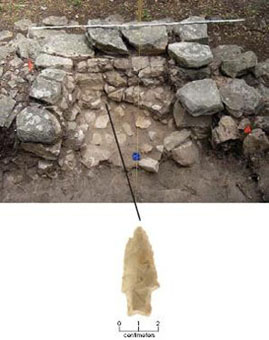
Dart point found at the very bottom of the fireplace in a context indicating that the person who built the chimney had placed it there. This item likely was placed there as a protective charm by Ransom Williams.
Wilkie observed that crystals and dart points were “religiously and magically important artifacts” that were found in yard areas and underneath houses at the Riverlake Plantation in Louisiana. Projectile points and other Native American chipped stone tools also were recovered from the Levi Jordan quarters, which housed the enslaved and freedmen community at a plantation in Brazoria County, Texas. These artifacts were recovered from contexts that suggested they might have had ritual functions.
At the Hermitage Plantation near Nashville, Tennessee, 15 artifacts found in one of the slave cabins included several broken projectile points. Archeologist Aaron Russell stated that “The recovery of prehistoric artifacts in African-American contexts at the Hermitage raises the possibility that enslaved African Americans were actively collecting and using them for some purpose.” He also notes that African Americans may have used the projectile points as strike-a-lights for starting fires.
One ethnographic account suggests an unusual connection between arrowheads, fire-making, and ritual charms. In the 1926 classic, Folk Beliefs of the Southern Negro, Newbell Niles Puckett reported: "One old conjure-doctor in Mississippi told me that the Indian arrowheads often found in the locality were not made by man at all, but were fashioned by God out of thunder and lightning."